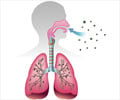A protein that yeast uses to protect itself from protein aggregation may harbour the cure for Parkinson disease (PD), says an international research team.
An international team of researchers has revealed that a protein that yeast uses to protect itself from protein aggregation may harbour the cure for Parkinson disease (PD).
The team, comprising experts from the Switzerland-based Ecole Polytechnique Federale de Lausanne and the Philadelphia-based University of Pennsylvania School of Medicine, says that the Hsp104 protein has shown promising results in a study on mice.Parkinson disease is caused by the progressive loss of nerve cells that produce the chemical dopamine, and is characterized by the accumulation of abnormal aggregates of a protein called alpha-syn in these dopaminergic nerve cells.
The researchers say that Hsp104 was found to significantly reduce both the formation of alpha-syn aggregates and the degeneration of neurons in the brain in a rat model of PD during the study.
In lab studies, the researchers observed that Hsp104 not only inhibited alpha-syn aggregate formation, but also interacted with mammalian proteins to disassemble them.
Based on their observations, the researchers came to the conclusion that Hsp104 could be considered as a potential strategy for the treatment of individuals with PD.
They, however, insisted that further studies were needed to determine the safety of introducing Hsp104 into the brain.
Advertisement
RAS/N












